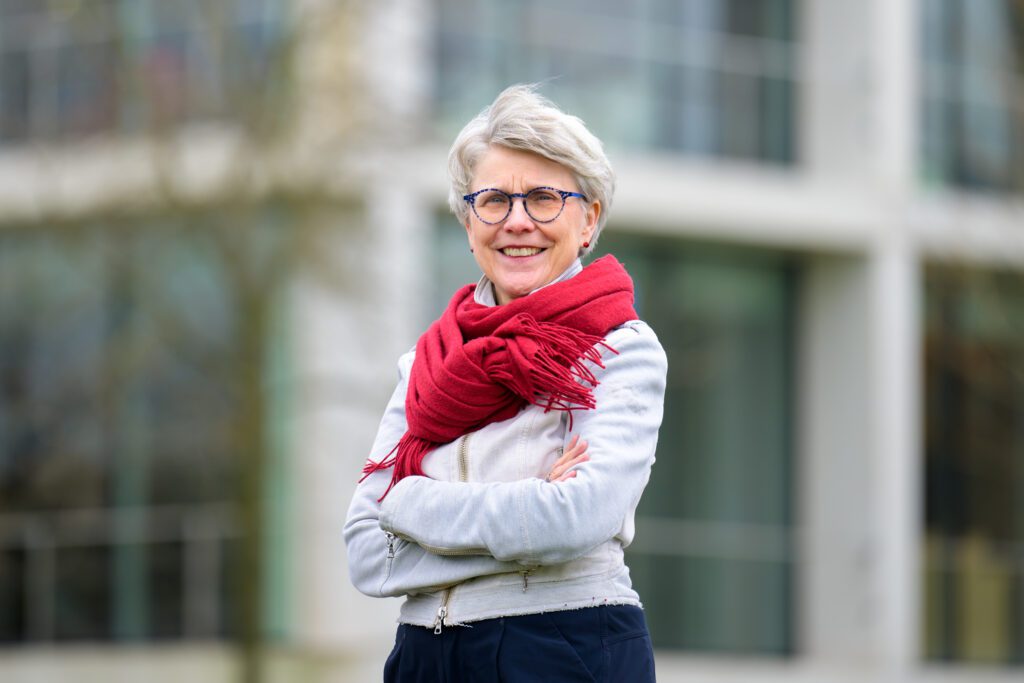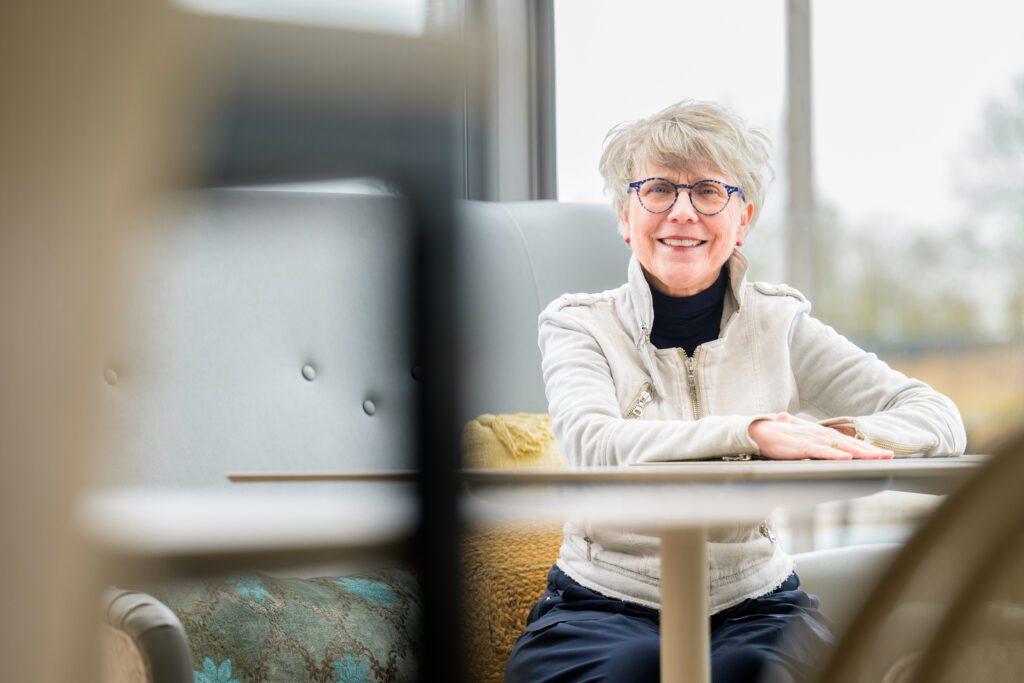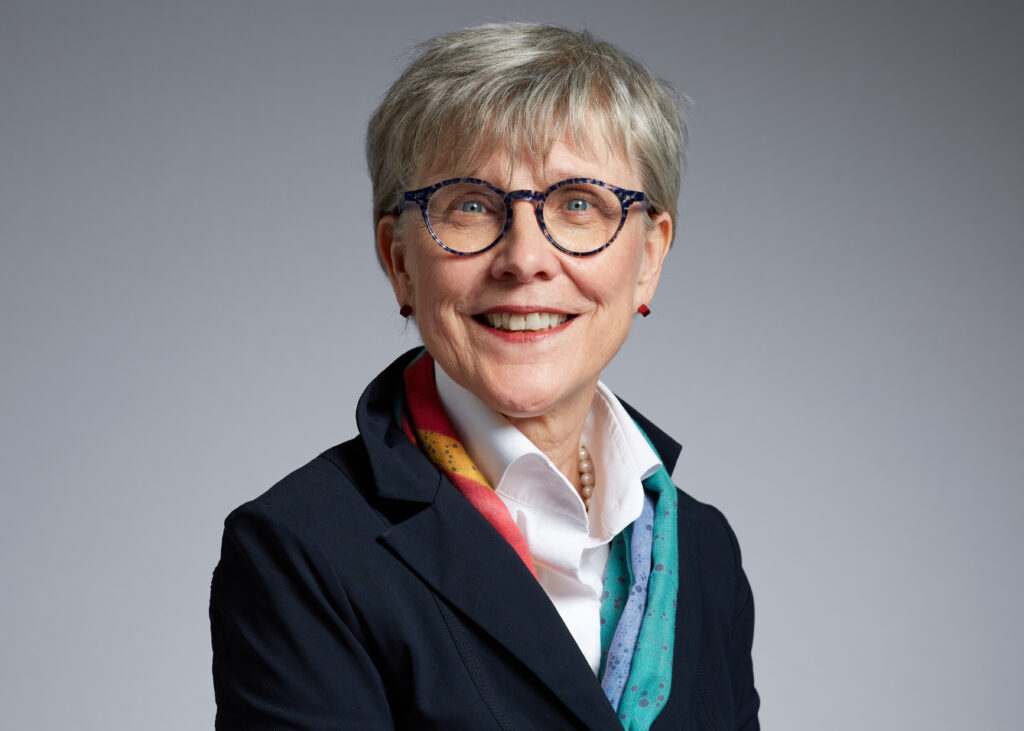In 2023, the Netherlands had over 2.7 million people aged 65 and over. This number is expected to increase significantly in the coming years. It is projected that by 2040, there will be 4.8 million people aged 65 and over. This presents significant challenges. Currently, only seniors with complex care needs can reside in nursing homes. This underscores the urgent need for an intermediate form of housing for seniors. With the dedicated team 'seniors and care,' AM focuses on developing areas where seniors with the appropriate care can live independently and happily for as long as possible. Anneke Speelman, development manager at this team, explains how AM develops innovative housing forms in close collaboration with care organizations.
To hurry up with new housing forms for the elderly

According to Anneke, the aging population calls for a new way of thinking. "In the coming years, we will see a doubling of the number of elderly people. At the same time, the number of informal caregivers is decreasing. Nowadays, people have fewer children who do not always live nearby. The number of professional caregivers needed to meet the growing demand does not increase proportionally. We will need to break structures in order to provide the care that the elderly need."
Intermediate form that better fits
With the Let's Live concept, AM contributes to a solution. Anneke outlines how the concept takes shape in the Elsbroek-Zuid residential care zone in Hillegom: "The municipality of Hillegom aims to create an inclusive area where both elderly people, with and without care needs, and younger people can live comfortably. About four years ago, AM became involved in developing this area." At that time, there was already a nursing home for people with severe dementia and significant physical problems, a service center where primary care providers could be found, and there were apartments for independently living seniors in social housing. In addition, there was a need for a care complex, age-friendly senior rental homes in the middle segment, and homes for families and starters. AM and the care organization HOZO joined forces to discuss the care complex. Through this collaboration, they discovered that an intermediate form better suited the needs of the elderly in the area. A housing form where seniors live independently but with VPT (full package at home) care provided."
Maintaining independence
The first initiative for Let's Live was born. Anneke explains, "Many people want to live independently for as long as possible but still need care." She provides various examples: "People with mild dementia who need more supervision, for example. Or elderly people who spend a lot of time on household chores due to severe physical complaints and accompanying pain. Their quality of life deteriorates. By providing these people with the right support, they have more time to enjoy life. This gives them the feeling that they still matter." According to Anneke, this group can live independently with the right home care: "This way, this group stays out of the nursing home, creating space for people with severe dementia who need a sheltered living environment." The Let's Live concept offers more than just good care for the elderly: "Yes, there is care available all day, but it's also about engaging in activities with the elderly. From walks to playing cards, making connections with the neighborhood, and doing errands together in the center. Activation is an important aspect. We want to ensure that residents are happy and feel that they are still valued. Well-being is paramount." The intermediate form that AM realizes with Let's Live in collaboration with care organizations also has the advantage that couples can continue to live together. "Even if one of the partners has a care indication and were to pass away, the surviving partner is guaranteed to continue living in the home."
Many people want to live independently for as long as possible but still require care
The idea is evolving.
The original idea in Hillegom was to realize assisted living apartments for vulnerable elderly individuals, where they would receive VPT (complete package at home) care through the care organization HOZO. For this, a WLZ (Long-term Care Act) indication is necessary. Over time and in conversation with all stakeholders, the idea evolved. Anneke explains: "On one hand, you have the care organization, which needs to financially support the care operation. For this, there needs to be a minimum number of people who require this care, but at the time of a new building, there aren't immediately 41 households with a care need. On the other hand, there's the investor, who wants to see the apartments rented out quickly. It seems there's a conflict of interests, but we looked for solutions together. The idea emerged to also offer VPT care in the neighborhood. To elderly individuals living nearby who don't want to move but still need care. By broadening the target group in this way, it becomes possible to financially support the care operation earlier. If at the start of renting out we haven't been able to rent out all apartments to the intended target group, this doesn't immediately pose a risk of a non-closing care operation. We then rent out the remaining apartments to seniors with a lighter care need or to seniors without a care need.
We are now also realizing mixed-target group assisted living complexes with some new initiatives. An additional advantage is that active seniors can play a role in activities and, if they wish, in supporting those who need more care." Providing informal care is also part of the assisted living zone in Hillegom. The neighborhood wants to offer more mutual neighborly assistance, Anneke explains: "The younger residents of the ground-floor houses have expressed their willingness to play a role for the elderly, and that role goes beyond just paying a visit or running errands. Think, for example, of administering eye drops or helping with putting on compression stockings. We are currently having discussions with these individuals to see what exactly this role could entail."

Transparent collaboration
Technology helps facilitate neighborly assistance, according to Anneke: "With smart apps, we now connect residents in a neighborhood with each other. This could also be used by the nursing home. For example, when they need a volunteer for occasional assistance, they can post a call. But residents who have a need for help or have something to offer can also make themselves heard." Anneke also expects technology to provide solutions in other areas. "In the Netherlands, healthcare is heavily regulated and administrative burden is high. If we can lighten that burden through automation, there will be more room to engage in activities with people. Hopefully, the politicians will also follow with more flexible laws and regulations. We need to dare to prioritize the well-being of the elderly."
According to Anneke, a significant part of the success of such living-care areas is that involved parties collaborate transparently: "Municipalities, healthcare organizations, client councils, investors, us as area developers, we need to be willing to look beyond our own interests to break down barriers. See what's going on with each other, determine what we're doing well and what could be improved, and be able to discuss that with each other. Together, creatively think with the central goal: making (vulnerable) elderly people happy."
Optimism brings change
There are now also plans for the Let's Live concept in Rotterdam, Amersfoort, and Schiedam. These are mixed neighborhoods where both people with VPT care live, as well as people with a mild care need and people without a care need. Anneke says: "We take what we learn and everywhere the idea continues to evolve." Anneke looks positively towards the future for the elderly in our country. "The beauty of it is that this generation of elderly people is vocal. They have their own ideas about new living forms that are an intermediate form between independent living and living in a nursing home, and we listen to them. I also see that the new generation of young people wants a society where we look out for each other much more. There are challenges, but only with optimism can we achieve this change."
